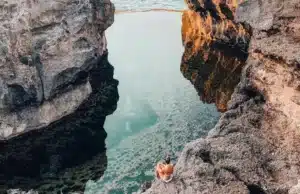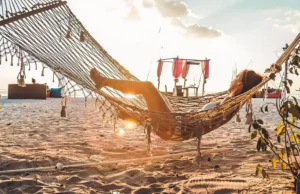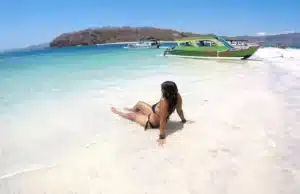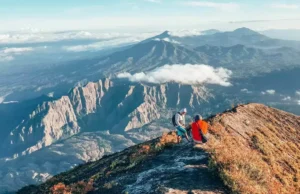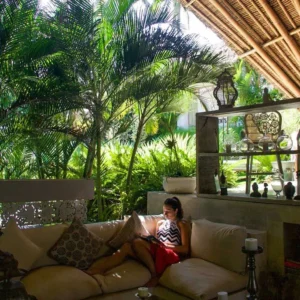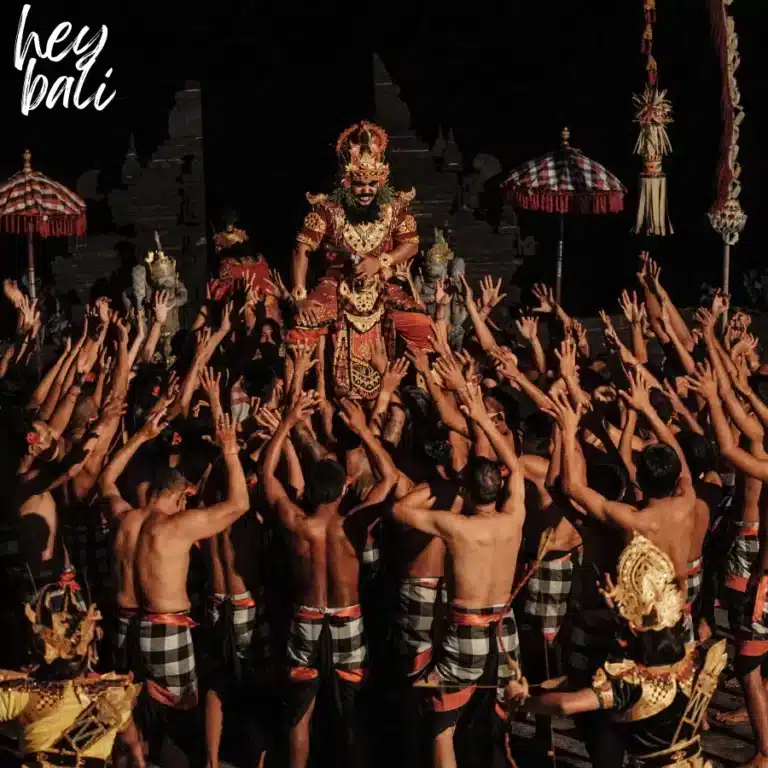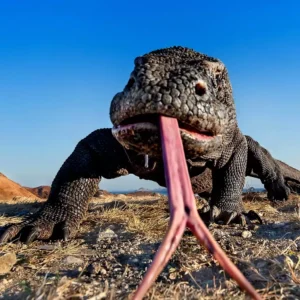Chapters
ToggleKomodo Dragon Komodo Island — pigeon to the world’s most wondrous animal. Famous for their girth, strength, and enigmatic appeal, these exceptional reptiles attract travelers and researchers from around the world. Set in the UNESCO-listed Komodo National Park, this island offers not only a chance to see these living legends but a gateway to adventure, the natural world and experiences unlike any other.
Read on for everything you will need to know, should you be wondering about Komodo dragons themselves, the folklore, or how to plan your trip.
We are going to explore some fun komodo dragon facts, setting the record straight on popular komodo dragon myths, and share some useful travel tips for your own komodo dragon spotting adventure. Get ready for an adventure like no other, to the most unique destination on the planet!
What Are Komodo Dragons?
Biological Facts
- Scientific name: Varanus komodoensis
- Length: Up to 10 feet (3 meters)
- Weight: Up to 330 pounds (150 kilograms)
- Unique features: Forked tongue, powerful tail, and sharp claws
Komodo dragons are the largest living lizards on Earth, found naturally on Komodo Island and a few neighboring islands in Indonesia's Lesser Sunda Islands. These incredible creatures are a sight to behold, with their massive size and prehistoric appearance.
Unique Traits and Adaptations
Komodo dragons are apex predators, ruling their ecosystem with an impressive set of hunting abilities. Their most famous weapon is their venomous bite, which contains a potent mix of bacteria and venom that can quickly subdue their prey.
These stealthy hunters are masters of ambush, often lying in wait for hours before launching a surprise attack on unsuspecting animals. Their diet includes deer, pigs, and even smaller Komodo dragons – talk about a tough neighborhood!
Their keen sense of smell allows them to detect carrion from miles away. Despite their bulky appearance, these reptiles are surprisingly fast, capable of running up to 12 mph in short bursts.
Conservation Status
Unfortunately, Komodo dragons are listed as endangered on the IUCN Red List. With only about 3,000 individuals left in the wild. Conservation efforts by the Indonesian government and international organizations have been instrumental in preserving their numbers. By visiting Komodo Island responsibly, you contribute to these vital efforts.
Morphology Komodo Dragon Komodo Island

Komodo Dragon Infographic Explained
Maximum body length of adult male Komodo dragon is up to 3.1 m, and maximum weight reaches 100 kg; Maximum body length of female is up to 2,4 m, and maximum weight 40 kg
- The Komodo has a pair of eyeballs and 2 different eyelids for each eye. On the upper eyelid, it is more passively moving and there is cartilage tissue in lower eyelid to wipe the eye surface.
- Komodo’s jaws are adapted to tear and shear flesh from its prey with 60 sharp recurved serrated teeth. The longest tooth can measure as much as 2 centimeters long. Sakta sebenarnya dari komodo dragon lebih lemah dibandingkan hewan pemangsa besar lainnya seperti buaya. Often produces large amount of saliva in anticipation of food. Various bacterial strains reside in its mouth saliva, along with toxin from venom gland situated in bottom of the teeth.
- Komodo has an extremely acute sense of smell also heightened by a Jacobson organ inside its nasal cavity. It detects odor particles with its forked tongue and transfers them to the Jacobson organ, which stimulates the brain. Tongue is yellow, distinguish from water monitor Varanus salvator has black tongue.
- Balance & Hearing Komodo has ears. Komodo, though, has a stronger reliance on its olfactory sense.
- Komodo has again scaly skin; each of its skin scales has a shape of bony body called an osteoderm which is tacky with keratin. The color of an adult will be clay-ish in Komodo National Park, rather yellowish as in North Flores especially on the neck and snout.
- Komodo has 4 corners with 5 fingers with a bent shape sharp nails on the hook. These assistin grasping prey, excavation of nests and the climbing of trees, as juv-lein reptiles.
- Juvenile Komodo: the tail is longer than the body, but as the size grows the tail will be in same length to the body. Its tail is rounded, thick, fat-storing layer, muscles that help it balance when running, as well as acting as paddle in the water. (Source : komododragon.org)
10 Myths and Facts About Komodo Dragon Komodo Island
1
Myth: Komodo dragons breathe fire like mythical dragons.
Truth: Komodo dragons do not breathe fire. They are large reptiles with sharp teeth and a powerful bite, but there’s nothing supernatural about them.

2
Myth: Komodo Dragons are Poisonous.
Truth: They are not poisonous in the traditional sense, but their bite is venomous. Their venom reduces blood clotting, leading to shock in prey.

3
Myth: Komodo Dragons can Kill with their Saliva.
Truth: While their saliva contains a mix of bacteria, it is the venom, not bacteria, that is primarily responsible for their deadly bite.
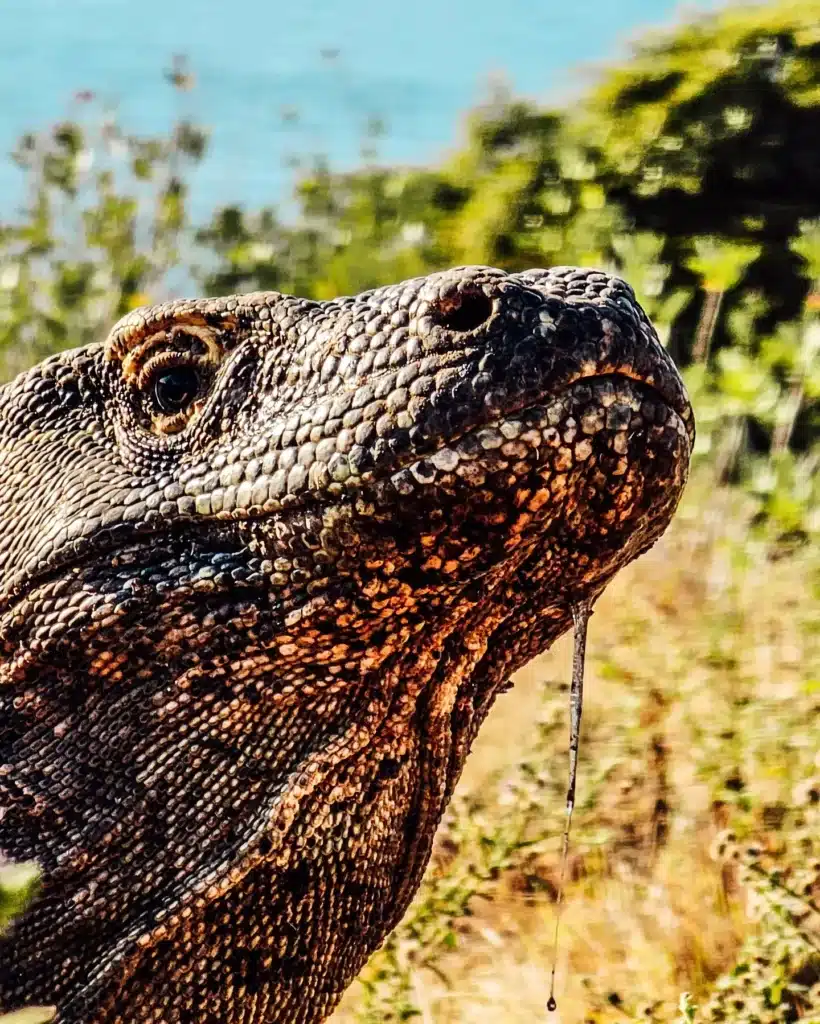
4
Myth: Komodo Dragons are Fast Runners.
Truth: Komodo dragons can sprint short distances at speeds of up to 20 km/h (12 mph), but they are not long-distance runners.

5
Myth: Komodo dragons are man-eaters.
Truth: While they are capable of attacking humans, such incidents are extremely rare. They prefer hunting wild prey like deer and pigs.

6
Myth: Komodo Dragons are only Found on Komodo Island.
Truth: Komodo dragons are native to several islands in Indonesia, including Rinca, Flores, Gili Motang, Riung and Komodo Island.
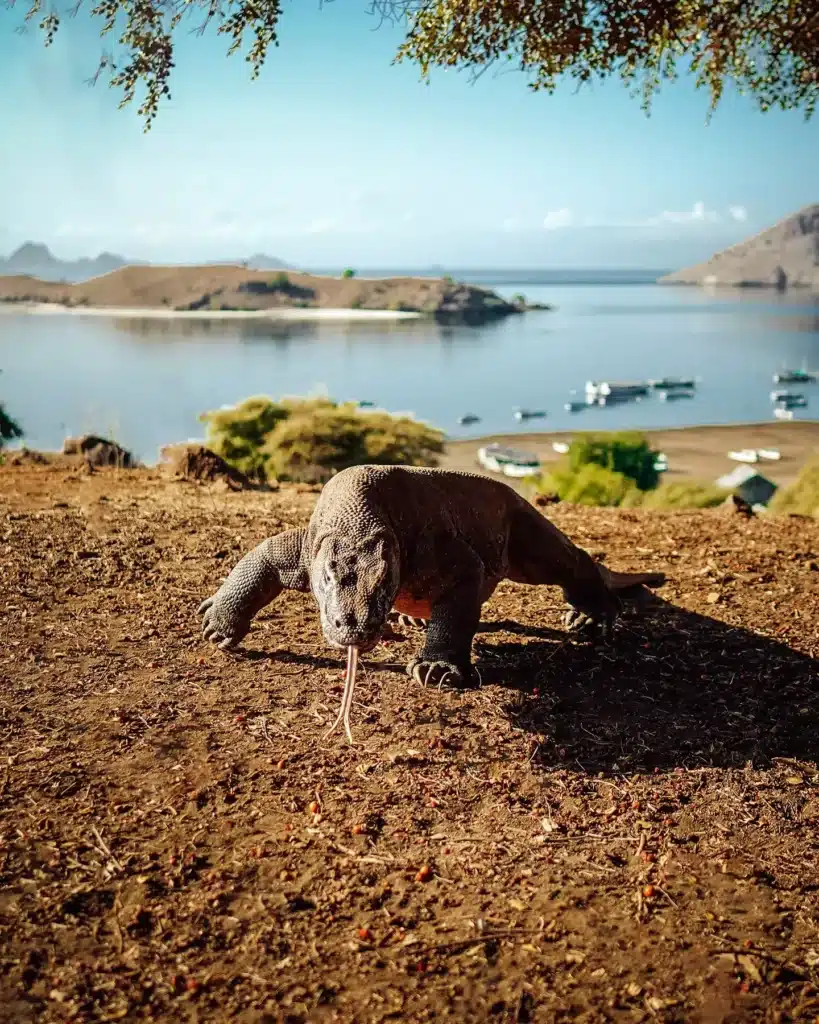
7
Myth: Komodo dragons are invincible.
Truth: They are apex predators but face threats from habitat destruction, natural disasters, and poaching. They are listed as endangered.
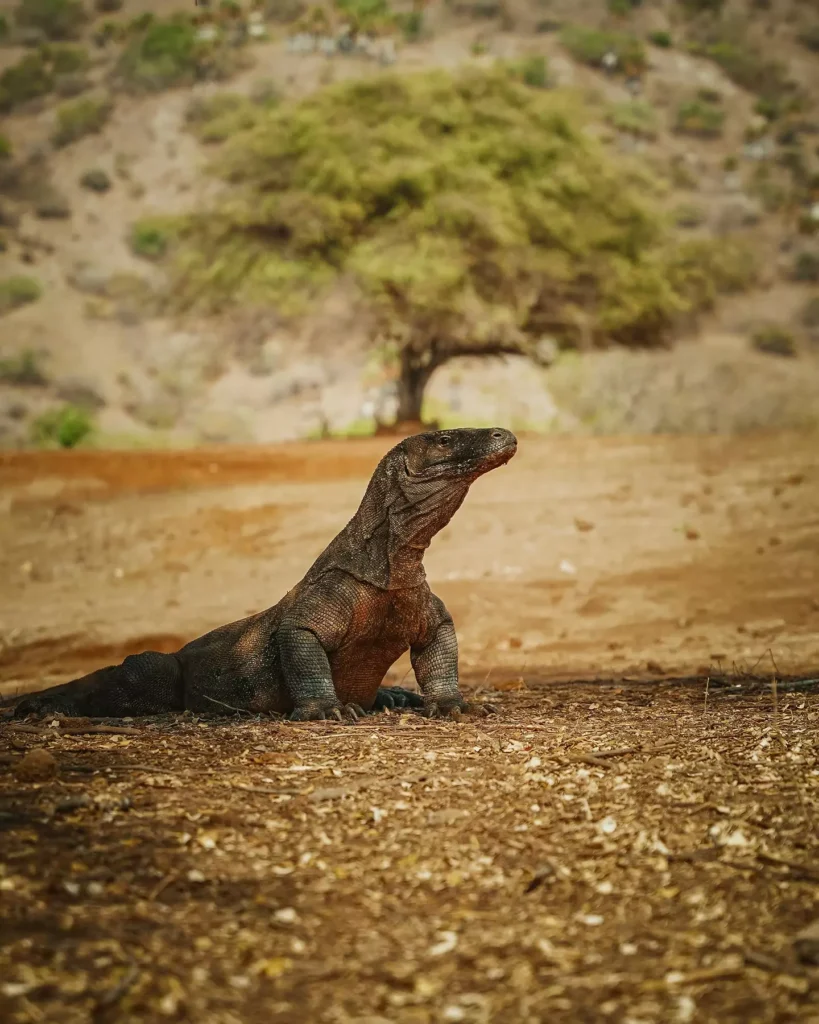
8
Myth: Komodo dragons lay hundreds of eggs.
Truth: Female Komodo dragons typically lay 15–30 eggs in a single clutch.

9
Myth: Komodo dragons are solitary animals.
Truth: While mostly solitary, they do gather during mating season or when feeding on large carcasses.
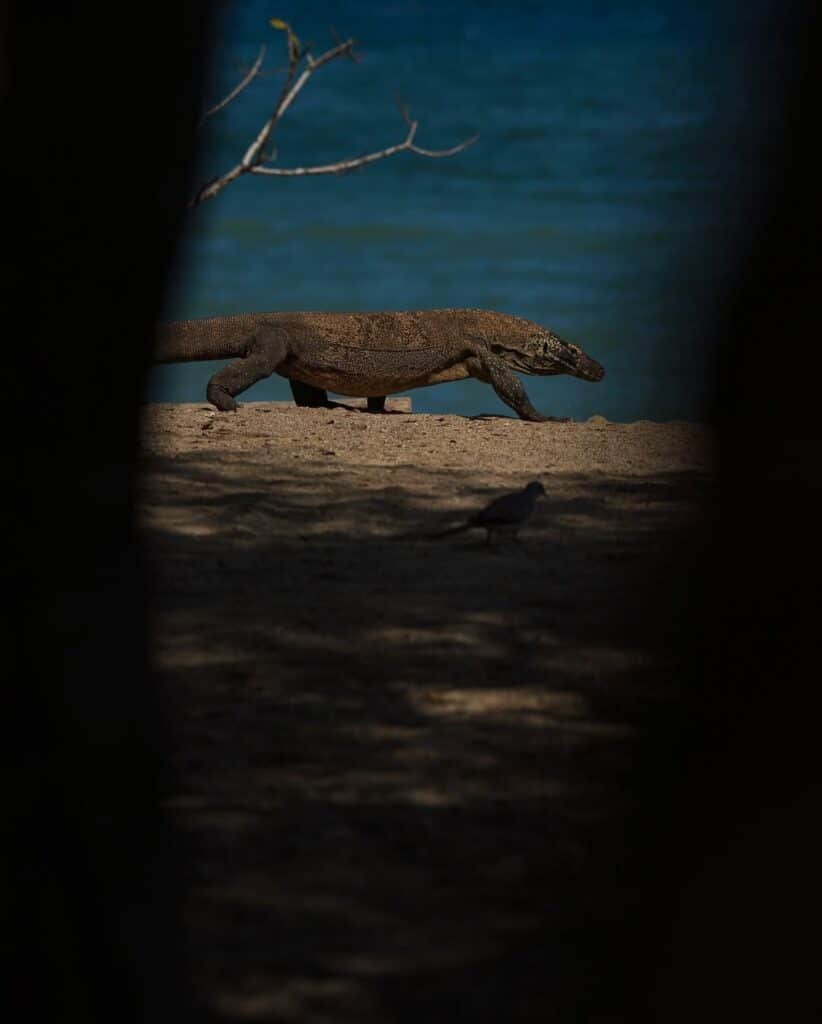
10
Myth: Komodo dragons can regenerate lost limbs.
Truth: Unlike some reptiles, Komodo dragons cannot regrow limbs.

These fascinating creatures continue to surprise scientists with their unique adaptations and behaviors. Recent studies have shown that Komodo dragons have a complex social structure and may even be capable of play behavior – who knew dragons could be so fun? – Source : (momentslog & howstuffworks )
The Truth Behind the Myths
Komodo dragons’ hunting prowess and physical traits often inspire tall tales, but their real-life abilities are equally fascinating. They are a testament to evolution’s ingenuity, blending power, strategy, and survival instincts into one incredible creature.
The Folklore of the Komodo Dragon

According to local folklore from Komodo Island, the Komodo dragon was born of a mystical bond between a human and nature. Long ago, a princess named Putri Naga gave birth to twin offspring: a human boy, named Gerong, and a dragon, named Orah. While Gerong grew up among the villagers, Orah lived deep in the forest, hidden from sight. Years later, Gerong encountered a dragon in the wild, ready to hunt it, but his mother appeared and revealed their shared lineage. She pleaded for the villagers to respect the dragons as kin, a decree that continues to shape the islanders’ harmonious coexistence with the Komodo dragons.
Exploring Komodo Island
Location and History
Komodo Island lies in eastern Indonesia, forming part of the Lesser Sunda Islands ( Labuan Bajo – Manggarai – Flores Island). It’s a cornerstone of the Komodo National Park, established in 1980 to protect Komodo dragons and their habitats. The park also boasts breathtaking landscapes and rich marine biodiversity.
The island’s rugged landscape, formed by ancient volcanic activity, creates a dramatic backdrop for your dragon-spotting adventure. With its global significance recognized by UNESCO, Komodo National Park is a true wonder of the natural world.
What to See and Do
- Guided trekking: Embark on a thrilling hike through the island’s savanna and forests, led by experienced rangers who know the best spots to spot Komodo dragons in their natural habitat.
- Pink Beach: Take a break from dragon-watching to relax on one of the world’s few pink sand beaches. The unique color comes from microscopic organisms mixed with white sand.
- Padar Island viewpoint: Climb to the top of nearby Padar Island for breathtaking panoramic views of the surrounding islands and turquoise waters.
- Snorkeling and diving: Explore the rich marine biodiversity of the Komodo National Park, home to vibrant coral reefs and an abundance of tropical fish species.
Nearby Islands
- Rinca Island: Another hotspot for spotting Komodo dragons, with less tourist traffic than Komodo Island.
- Padar Island: Famous for its stunning viewpoints, offering panoramic vistas of turquoise bays and rolling hills.
Types of Tours to Komodo Island

Day Trips
For those short on time, day trips from Labuan Bajo offer a quick glimpse of Komodo Island. These tours typically include trekking to see Komodo dragons and visiting nearby attractions like Pink Beach.
There are 2 types of Day Tour Komodo:
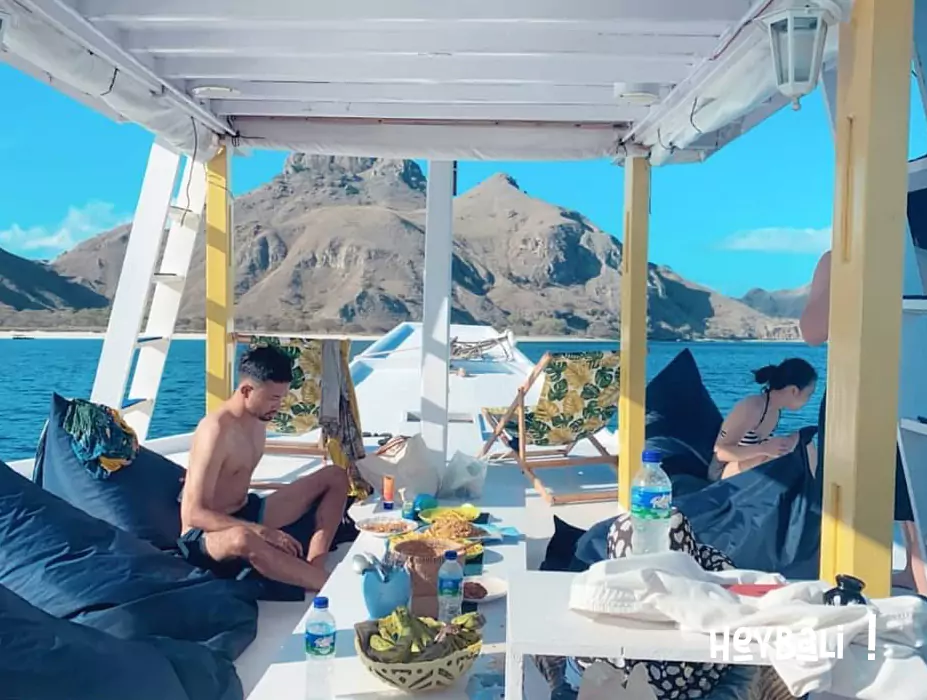
Liveaboard Tours
Liveaboard options provide an immersive experience, allowing you to explore multiple islands and dive sites. These multi-day trips include meals, accommodations, and guided activities, perfect for adventurers seeking more depth.
This tour allows you to set the duration and places you want to visit. So you can linger on Komodo Island to observe the Komodo Dragon.
Example of this Tour: https://heybali.info/trip/mata-komodo-boat-rental-liveonboard-2-day-1-night/

Custom Private Tours
Private charters cater to travelers looking for a personalized experience. Customize your itinerary to include trekking, diving, and leisure activities tailored to your preferences.
This tour allows you to rent a Private Speedboat or Slow Boat in one day. So you are more free to explore Komodo island without being limited in time.
The following is the price of the Private Komodo Tour:
Tips for Travelers to Komodo Island
Preparation Before Visiting
- Best time to visit: April to December offers the best weather conditions, with the dry season from May to September being ideal for trekking and wildlife spotting.
- Essential items to bring:
- Sturdy trekking shoes
- Lightweight, breathable clothing
- High SPF sunscreen
- Insect repellent
- Reusable water bottle
- Camera (you’ll want to capture those dragon moments!)
Safety and Etiquette Around Komodo Dragons
- Always follow ranger instructions and maintain a safe distance from the dragons (at least 5 meters).
- Never attempt to feed or tease the Komodo dragons – they’re wild animals and can be dangerous if provoked.
- If you encounter a Komodo dragon up close, stay calm and slowly back away. Don’t run, as this may trigger their predatory instincts.
Transportation and Accommodation
- Reach Komodo Island via Labuan Bajo, the gateway town on Flores Island. Fly to Labuan Bajo from Bali or other major Indonesian cities.
- Choose between day trips to Komodo Island or multi-day liveaboard experiences for a more immersive adventure.
- Labuan Bajo offers a range of accommodations, from budget hostels to luxury eco-resorts. Consider staying at a place with a commitment to sustainable tourism practices.
The Impact of Tourism on Komodo Dragons and Their Environment
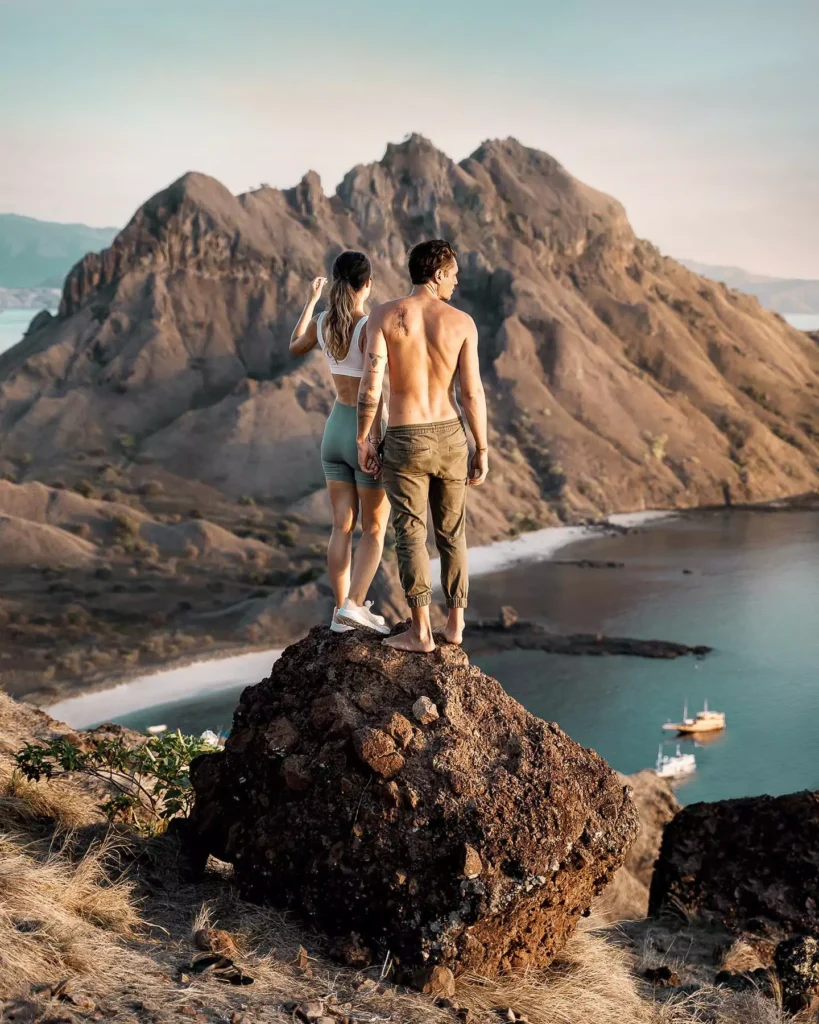

Positive Impacts
Tourism has brought much-needed attention and resources to Komodo dragon conservation efforts. Visitor fees contribute to park maintenance and research programs, while the local economy benefits from sustainable tourism opportunities.
Negative Impacts
The growing popularity of Komodo Island has led to concerns about overtourism. Increased human presence can disrupt the dragons’ natural behavior and habitat. Pollution and waste management are also significant challenges within the national park.
Sustainable Tourism Efforts
The Indonesian government has implemented measures to limit visitor numbers and promote responsible tourism practices. Many tour operators now offer eco-friendly options that minimize environmental impact.
“Take nothing but pictures, leave nothing but footprints, kill nothing but time.” – This old traveler’s motto is especially relevant when visiting Komodo Island.
As a responsible traveler, you can help by:
- Choosing eco-friendly tour operators
- Properly disposing of waste
- Respecting wildlife and local communities
- Supporting local conservation initiatives
Conclusion Komodo Dragon Komodo Island
Komodo Island offers a once-in-a-lifetime opportunity to witness the power and beauty of Komodo dragons in their natural habitat. This unique destination combines thrilling wildlife encounters with stunning landscapes and rich marine biodiversity.
As we marvel at these incredible creatures, we must also recognize our responsibility to protect them and their fragile ecosystem. By exploring Komodo Island responsibly and supporting conservation efforts, we can help ensure that future generations will have the chance to experience the magic of the Komodo dragons.
So, pack your sense of adventure, respect for nature, and get ready for an unforgettable journey to the land of dragons. Komodo Island awaits – will you answer its call?















